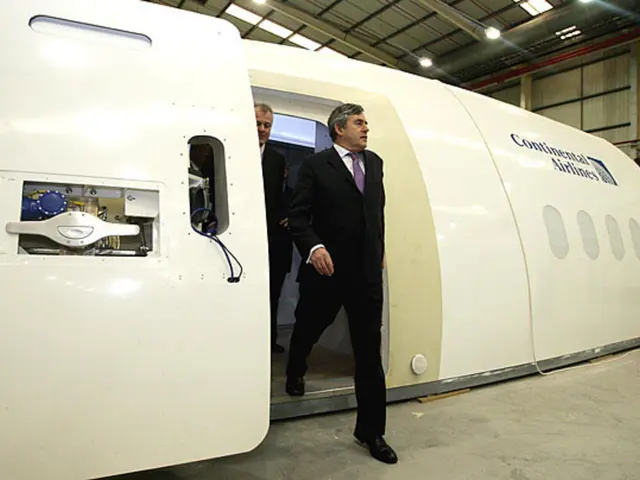Commercial Ventilation Regulations and Extractor Fan Performance Evaluations in Building Development
Proper ventilation is critical for commercial projects, ensuring compliance, safety, and occupant well-being. This is particularly vital in bustling kitchens, office buildings, and retail spaces. In today's article, we discuss the importance of an extractor fan test certificate, a mandatory aspect of ventilation systems in commercial buildings.
An extractor fan test certificate serves as a diagnostic tool, confirming that a building's extractor fans are functioning efficiently and adhering to relevant regulations. It's like a report card for a ventilation system, highlighting its efficiency and compliance.
Importance of Ventilation in Commercial Spaces
Proper ventilation offers significant benefits in commercial spaces, addressing more than just stale air. Improper airflow can contribute to respiratory issues, allergies, reduced productivity, and safety hazards. Additionally, it's essential to meet regulatory requirements to avoid fines or operational shutdowns.
Understanding Ventilation Standards and Regulations
Ventilation standards and regulations vary across commercial projects due to differences in size and purpose. Authorities such as ASHRAE (US) and CIBSE (UK) provide benchmarks for airflow rates, indoor air quality, and ventilation design.
Key Components of Ventilation Regulations
- Air Changes Per Hour (ACH): This measure indicates the number of times an hour that the air in a room is replaced. higher ACH rates are required for spaces with increased air pollutants, like restaurants and manufacturing facilities.
- Filtration Standards: These standards outline the type and level of air purification systems needed to minimize contaminants.
- Noise Limits: Noise levels must be kept within acceptable ranges to ensure an enjoyable work or dining environment.
- Maintenance and Testing: Regular checks and tests ensure that ventilation systems perform optimally, reducing the risk of inefficiencies and safety hazards.
Extractor Fan Test Certificate: Its Meaning and Importance
An extractor fan test certificate validates the operating efficiency of the system's extractor fans. Regular testing facilitates early detection of issues, minimizing energy waste, safety hazards, and potential legal fines.
Testing an Extractor Fan
During an extractor fan test, a technician examines the fan's system performance, contaminant reduction, energy usage, noise levels, and compliance with building and safety standards.
The Essence of Regular Testing for Commercial Projects
Ignoring regular extractor fan tests can lead to increased maintenance costs, potential fire hazards, and decreased system efficiency. Regular tests help ensure compliance with regulations, maintain optimal air quality, extend the lifespan of equipment, and save on energy costs.
Tips for Managing Ventilation in Commercial Spaces
Managing a commercial ventilation system can be overwhelming, but effective strategies make the process more manageable. Maintain records, schedule regular maintenance, train staff, partner with professionals, and stay updated on regulations to maintain a safe and efficient ventilation system.
By focusing on regular testing and maintenance, businesses can secure peace of mind, demonstrating commitment to occupant health, regulatory compliance, and operational efficiency.
- In the manufacturing industry, proper ventilation systems are essential to ensure safety, compliance, and productivity.
- The home-improvement sector often requires ventilation solutions that address humidity, odors, and air quality concerns.
- Finance plays a crucial role in funding large-scale commercial projects, including ventilation infrastructure installation.
- Lifestyle magazines and blogs may feature articles on retrofitting homes with energy-efficient ventilation systems for personal growth and self-development.
- Ventilation standards dictate the required airflow rates for home-and-garden sheds to maintain proper temperature and air quality.
- In career opportunities within the data-and-cloud-computing industry, professionals may design intelligent ventilation systems that learn and adapt to user needs.
- Social media platforms can serve as forums for sharing product reviews, including opinions on air purifiers and ventilation equipment.
- General news outlets cover stories related to pollution, indoor air quality, and the impact of poor ventilation on public health.
- Sports arenas require extensive ventilation systems to accommodate large crowds and manage temperature, air quality, and noise levels.
- Sports-betting enthusiasts might appreciate the role of technology in predicting weather patterns and adjusting arena ventilation systems for optimal fan experience.







